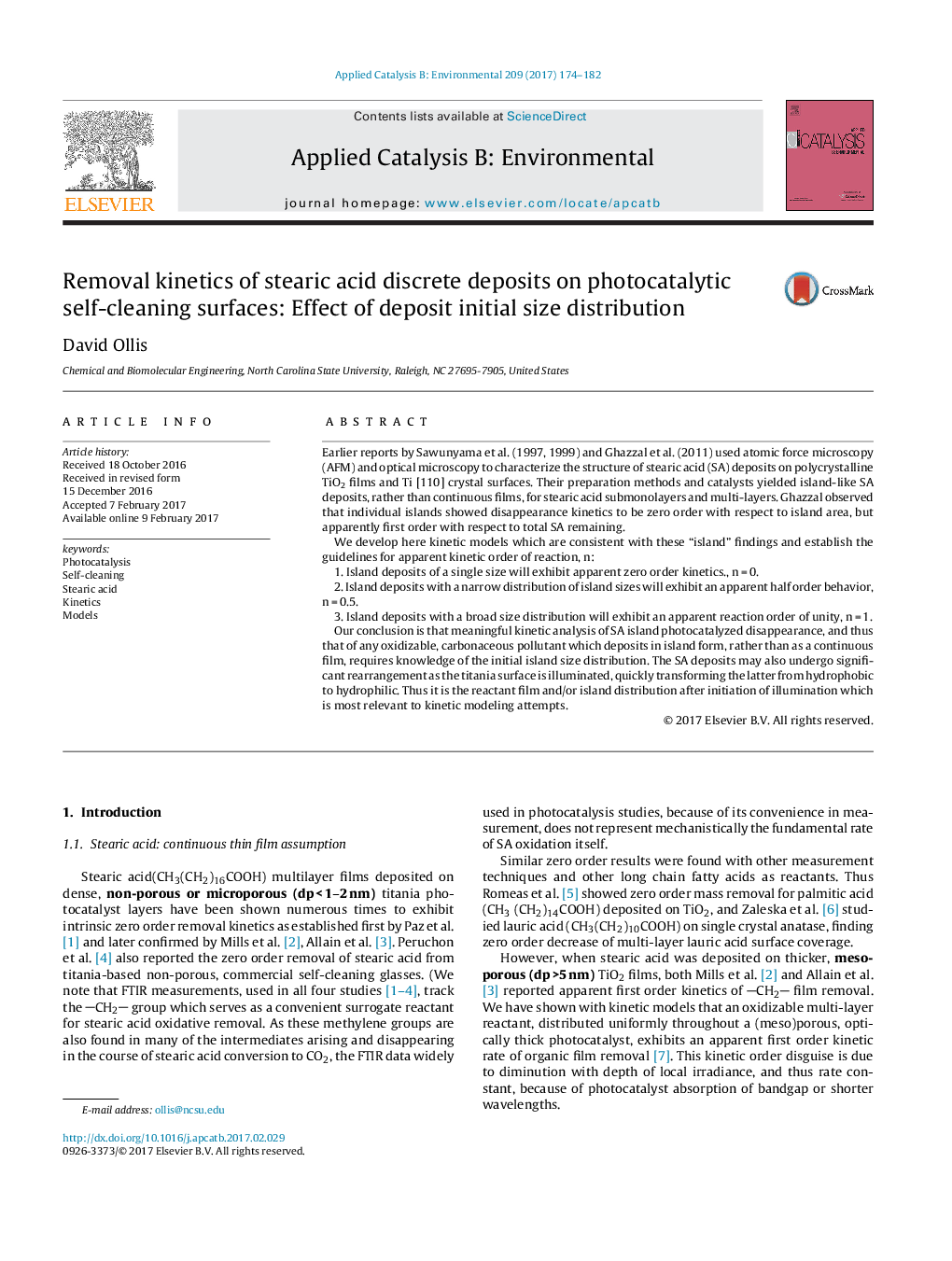| کد مقاله | کد نشریه | سال انتشار | مقاله انگلیسی | نسخه تمام متن |
|---|---|---|---|---|
| 6454151 | 1418811 | 2017 | 9 صفحه PDF | دانلود رایگان |
- Hydrocarbon deposits on photocatalysts may be particulate, not continuous.
- Particle size distribution affects apparent kinetic order of PCO removal of such deposits.
- Mechanistic kinetic models rationalize observed kinetics.
Earlier reports by Sawunyama et al. (1997, 1999) and Ghazzal et al. (2011) used atomic force microscopy (AFM) and optical microscopy to characterize the structure of stearic acid (SA) deposits on polycrystalline TiO2 films and Ti [110] crystal surfaces. Their preparation methods and catalysts yielded island-like SA deposits, rather than continuous films, for stearic acid submonolayers and multi-layers. Ghazzal observed that individual islands showed disappearance kinetics to be zero order with respect to island area, but apparently first order with respect to total SA remaining.We develop here kinetic models which are consistent with these “island” findings and establish the guidelines for apparent kinetic order of reaction, n:1. Island deposits of a single size will exhibit apparent zero order kinetics., n = 0.2. Island deposits with a narrow distribution of island sizes will exhibit an apparent half order behavior, n = 0.5.3. Island deposits with a broad size distribution will exhibit an apparent reaction order of unity, n = 1.Our conclusion is that meaningful kinetic analysis of SA island photocatalyzed disappearance, and thus that of any oxidizable, carbonaceous pollutant which deposits in island form, rather than as a continuous film, requires knowledge of the initial island size distribution. The SA deposits may also undergo significant rearrangement as the titania surface is illuminated, quickly transforming the latter from hydrophobic to hydrophilic. Thus it is the reactant film and/or island distribution after initiation of illumination which is most relevant to kinetic modeling attempts.
356
Journal: Applied Catalysis B: Environmental - Volume 209, 15 July 2017, Pages 174-182
